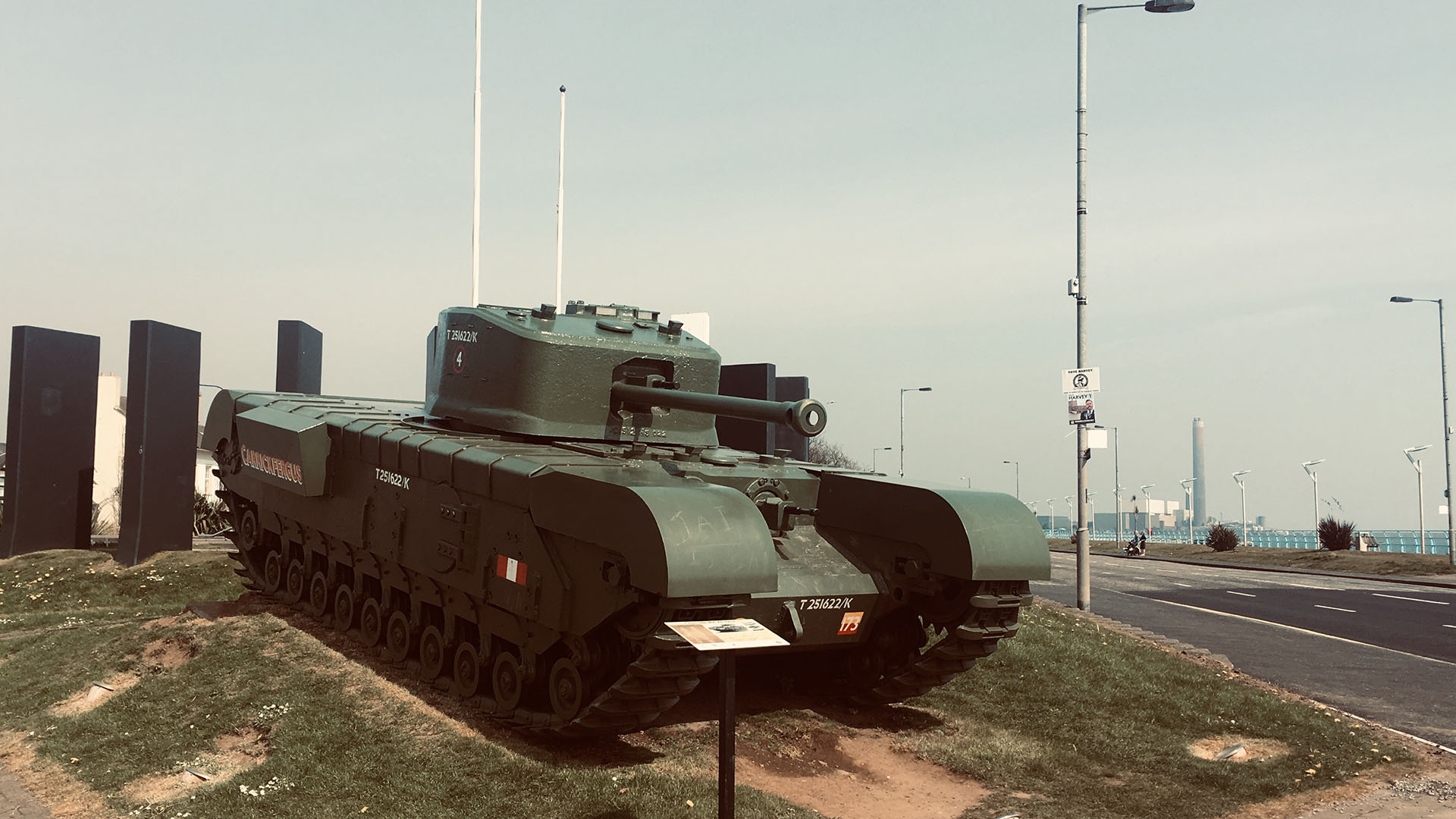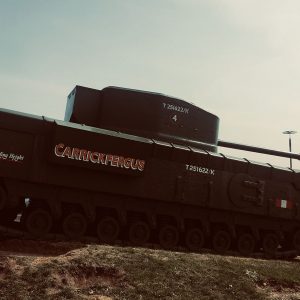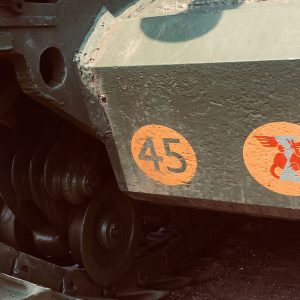A Mk. VII Churchill Tank stands at the side of the Marine Highway, Carrickfergus, Co. Antrim. The restored vehicle was a gift to the Borough from the Trustees of the North Irish Horse Regimental Association.
Her Majesty’s Lord-Lieutenant of Co. Antrim, Mrs. Joan Christie O.B.E. unveiled the display on Armed Forces Day, 28th June 2014.
Enthusiastic amateurs completed much of the restoration work, including Army Reservists, experts from the Railway Preservation Society of Ireland, and young people from the Hydebank Centre. Financial assistance came from the Heritage Lottery Fund.
This model of tank was a successor to the Churchill A20, a prototype designed by Harland and Wolff Ltd. in Belfast and produced both at the Belfast works and on Woodburn Road, Carrickfergus, Co. Antrim during the Second World War.
Now bearing the name ‘Carrickfergus’, this Churchill Tank saw action with C Squadron, North Irish Horse during the Second World War. The current livery also shows a Canadian flag symbolising the close relationship between the North Irish Horse and Canadian Infantry, particularly in the Italian Campaign.
The Carrickfergus tank saw little in terms of combat during the Italian Campaign. Delivered to 21st Tank Brigade, it arrived shortly before the break up of 145th Regiment Royal Armoured Corps. North Irish Horse took their place in 21st Tank Brigade.
The Mk. VII Churchill tank weighs approximately 40 tons, measuring a length of 7.68m or 25’2″ and a width of 3.29m or 10’8″. In wartime, it carried a crew of 4 and travelled at a maximum speed of 12.5 miles per hour. It carried 2 petrol tanks with a capacity of 150 gallons, which fuelled a Bedford 12-cylinder, 22-litre petrol engine. The main75mm gun fired 15lb shells and was supplemented by a pair of Birmingham Small Arm machine guns.




